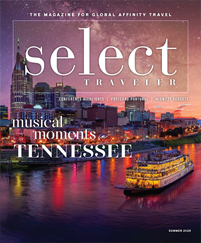Immersive Museums
Another large historic building, home to the local orphanage from 1895 to 1984, now houses Galveston’s newest museum. The Bryan Museum, which opened in June 2015, has maintained much of the building’s interior woodwork and features such as a built-in bench that children would sit on while waiting to be interviewed by prospective adoptive parents.
The museum houses a comprehensive collection of artifacts, documents and artwork, all collected by one man, J.P. Bryan. There are saddles, spurs, antique firearms, rare maps, books and other artifacts ranging from a pre-Colombian stone mortar and pestle to items from the Mexican Revolution of the 1920s.
“It all tells about the history of the southwest United States,” said Rebecca Diaz-Arrastia, the museum’s docent coordinator. “All you see are part of his collection.”
The Ocean Star Offshore Drilling Rig and Museum at Pier 20 provides an informative look at the technology of drilling for oil in hundreds of feet of water and what life is like on an offshore oil rig, where up to 200 workers can consume 1,600 pounds of meat, 250 pounds of potatoes and 80 gallons of milk in a week.
The museum is located in a former offshore drilling rig built in 1969 and used until the late 1980s. After viewing exhibits on three levels inside the rig, you can walk outside onto the drill floor for a close look at large drill bits.
Into Outer Space
The next day I got a look at life in another challenging environment — outer space — at Space Center Houston, about halfway between Galveston and Houston along Interstate 45.
“We tell the story of human space exploration,” said Meridyth Moore, public relations specialist. “We try to bring that story to life.”
The newest exhibit, opened earlier this year, is Independence Plaza, where an authentic replica of a space shuttle sits atop an actual Boeing 905 shuttle carrier that was used in more than 200 missions.
“It is the only place in the world you can see inside a space shuttle and its carrier,” said Moore. “You can feel like an astronaut for a day.”
I was amazed at the small, cramped living area of the space shuttle, where astronauts performed research, ate, slept and even went to the bathroom in the same tight quarters.
In addition to feeling like an astronaut, you can meet one every Friday for 30-minute presentations or arrange to have an hour lunch with an astronaut. “They come around to every table and talk to you personally,” said Moore.
The huge museum has a comprehensive collection of space artifacts, including one of the largest collections of space suits, along with flown space capsules from the Mercury, Gemini and Apollo programs.
I joined a tram tour to the adjacent Johnson Space Center, the training and control center for space flight for more than 50 years. The tour passes by buildings on the sprawling complex where the first Americans in space trained and visits the historic mission control center.
“It handled all the Apollo missions to the moon right here,” said a guide.
Urban Houston
I spent my final two nights in downtown Houston. Although Houston is the fourth largest city in the United States, and its suburban freeways can be packed, I found the downtown to be comfortable and easy to navigate.
Adding to the comfortable feel is an aggressive public art program and several parks, such as Market Square Park and Sam Houston Park, where the Heritage Society Museum has 10 historic buildings displayed with a backdrop of modern skyscrapers.
Art Block along Main Street features large art installations that remain for at least a year. One of the current ones is “Trumpet Flower,” in which artist Patrick Renner used repurposed wood strips painted by local residents to create a multistory sculpture that provides shade for tables and chairs during the day.
Another installation features a multi-color pastel field along the street and up the sides of buildings at a main downtown intersection.









